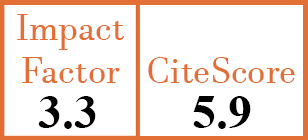Full Papers
The effect of intravenous immunoglobulin (IVIG) treatment on patients with dermatomyositis: a 4-year follow-up study
E.I. Kampylafka, M.L. Kosmidis, D.B. Panagiotakos, M. Dalakas, H.M. Moutsopoulos, A.G. Tzioufas
CER4901
2012 Vol.30, N°3
PI 0397, PF 0401
Full Papers
Free to view
(click on article PDF icon to read the article)
PMID: 22510247 [PubMed]
Received: 12/07/2011
Accepted : 26/10/2011
In Press: 26/06/2012
Published: 26/06/2012
Abstract
OBJECTIVES:
The aim of this study is to evaluate the short- and long-term outcome of patients with dermatomyositis treated with IVIG.
METHODS:
Forty-two dermatomyositis patients (43±19 yrs, 40.5% males) were studied; 24 of them received IVIG as an add-on treatment, while the rest received conventional immunosupression. The first follow-up point was 6 months following the initiation of treatment. Muscular and cutaneous involvement, as well as demographical and baseline data of the IVIG treated patients, were documented for a median period of 76 months (1st, 3rd quartiles 48, 108).
RESULTS:
Muscular remission rate was higher for IVIG treated patients at 6 months after the onset of treatment (p=0.007). During long-term follow-up, IVIG treated patients presented with low muscular and cutaneous involvement, as well as low percentages of muscular relapses. The total number of muscular relapses was inversely associated with the number of pulses (p=0.03).
CONCLUSIONS:
This study is a retrospective one, consisting of a small patient sample, and both muscle and skin involvement scores were developed on the basis of the clinical data provided in the patients` records. Nevertheless, it manages to demonstrate that IVIG may improve the short-term prognosis of dermatomyositis patients as compared to the classical therapies. During long-term follow-up, IVIG treated patients experienced relapses, but their muscular and cutaneous involvement scores were significantly better than their pre-treatment ones. A larger number of IVIG infusions could maintain disease remission for a longer period of time, reducing the total number of muscular relapses.


